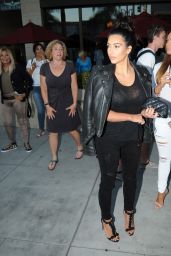

In 1903, Carl Schulz established the first Naturopathic Institute in Los Angeles.

There are direct connections between the sanitarium designs of Europe and New York, and what would later happen in California, according to Kilston. In the late 19th century, Europe was a hive of research activity into the benefits of fresh air, exercise, and recouperative healing, ideas that quickly began traversing the Atlantic. Kilston’s book deftly connects the myriad threads between European health fads, early modernist architecture, and the synthesis of both in the high-end homes that began to stack up on Los Angeles hillsides. Neutra’s design was as stripped-down and nature-oriented as a tall, tanned doctor pushing the benefits of a vegan diet. One of Neutra’s apprentices named this style “raw food architecture” (critic Esther McCoy would put a sharp spin on the turn of phrase, saying that “the ‘raw-food architecture’ of the ‘20s became the caviar by mid-century”). We have to thank LA for being the kind of place where a wacky health nut could make enough money to commission a house like this.” “The architect was brilliant and did plenty of incredible things, but in this case, he catered to a particular client’s interests. “His radical ideas about health dictated that these buildings developed the way they did,” Kilston tells Curbed.

Neutra’s design was as stripped-down and nature-oriented as a tall, tanned doctor and naturopath pushing the benefits of a vegan diet. Lovell, a nutritional advocate and newspaper columnist who embraced raw foods and sunbathing, simply wanted his new home to reflect his beliefs. The in-depth look at how early 20th century wellness trends converged upon Los Angeles holds up the Lovell Health House as a reflection of both the physical and social landscape. It also, as the name implies, was rooted in California’s longstanding role as a center for health, wellness, nutritional fads, and sunshine, as Lyra Kilston recounts in her excellent new book Sun Seekers. The look was liberally borrowed by the Case Study homes that would create a pattern library for midcentury modern residential design. The Lovell Health House launched Neutra’s career-he described it as going from a starvation diet to a career-and helped create a template for sleek, streamlined homes. “Richard, you and RMS were the ‘Hippies,’ the protestors of those years in the field of architecture,” Lovell wrote to the architect of his famous home, known as the Lovell Health House, a concrete-and-steel structure built into the hills near Griffith Park in the late 1920s, when the area was still wild. But this correspondence between Lovell, an LA-based health-food evangelist and self-proclaimed naturopath, and Richard Neutra, a pioneering modernist architect, offers fascinating insight into a relationship that would eventually reshape Southern California architecture. Philip Lovell seemed appropriate for the time. In 1969, a banner year for counterculture, the casual use of the term “hippies” in a letter penned by Dr.


 0 kommentar(er)
0 kommentar(er)
